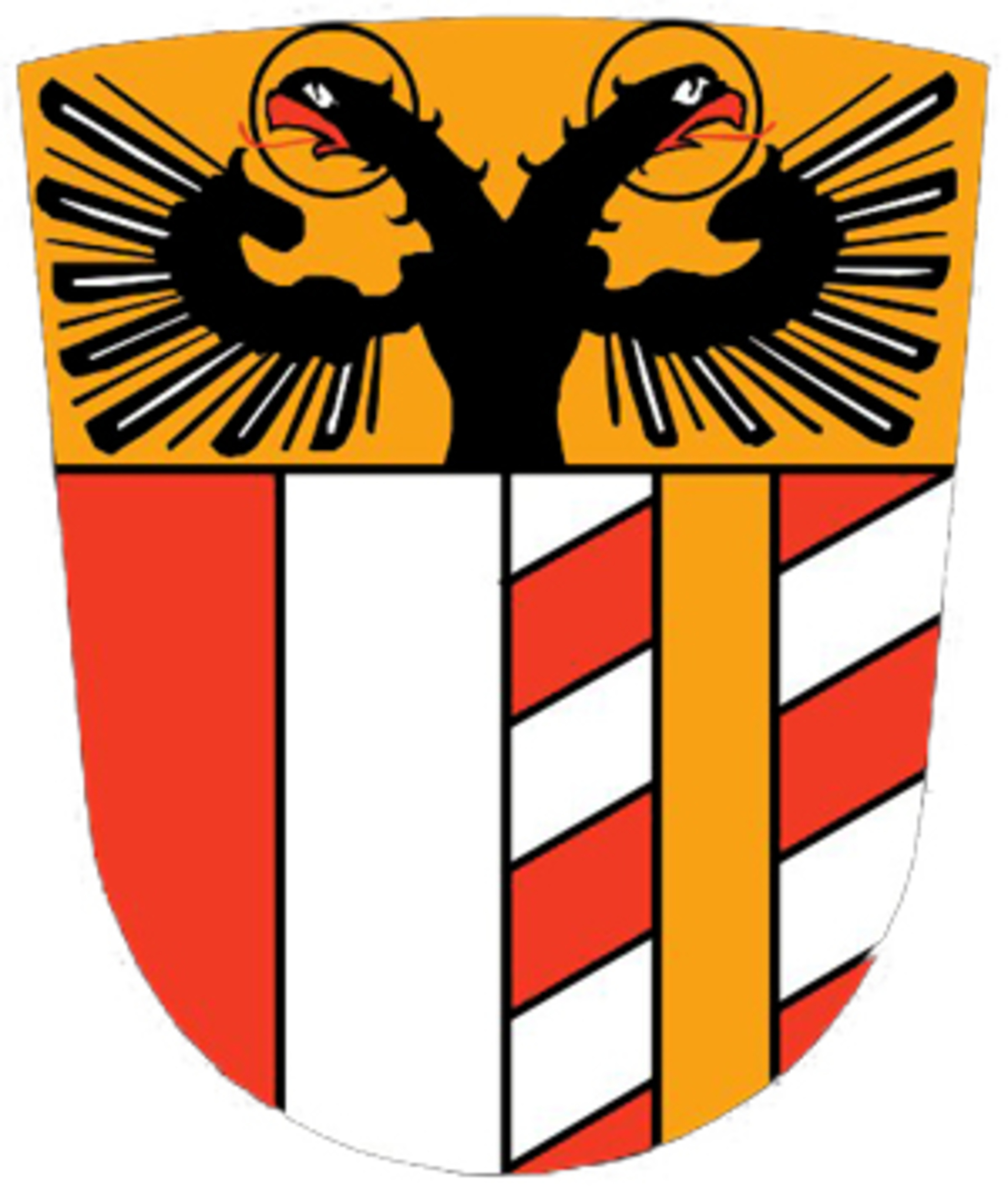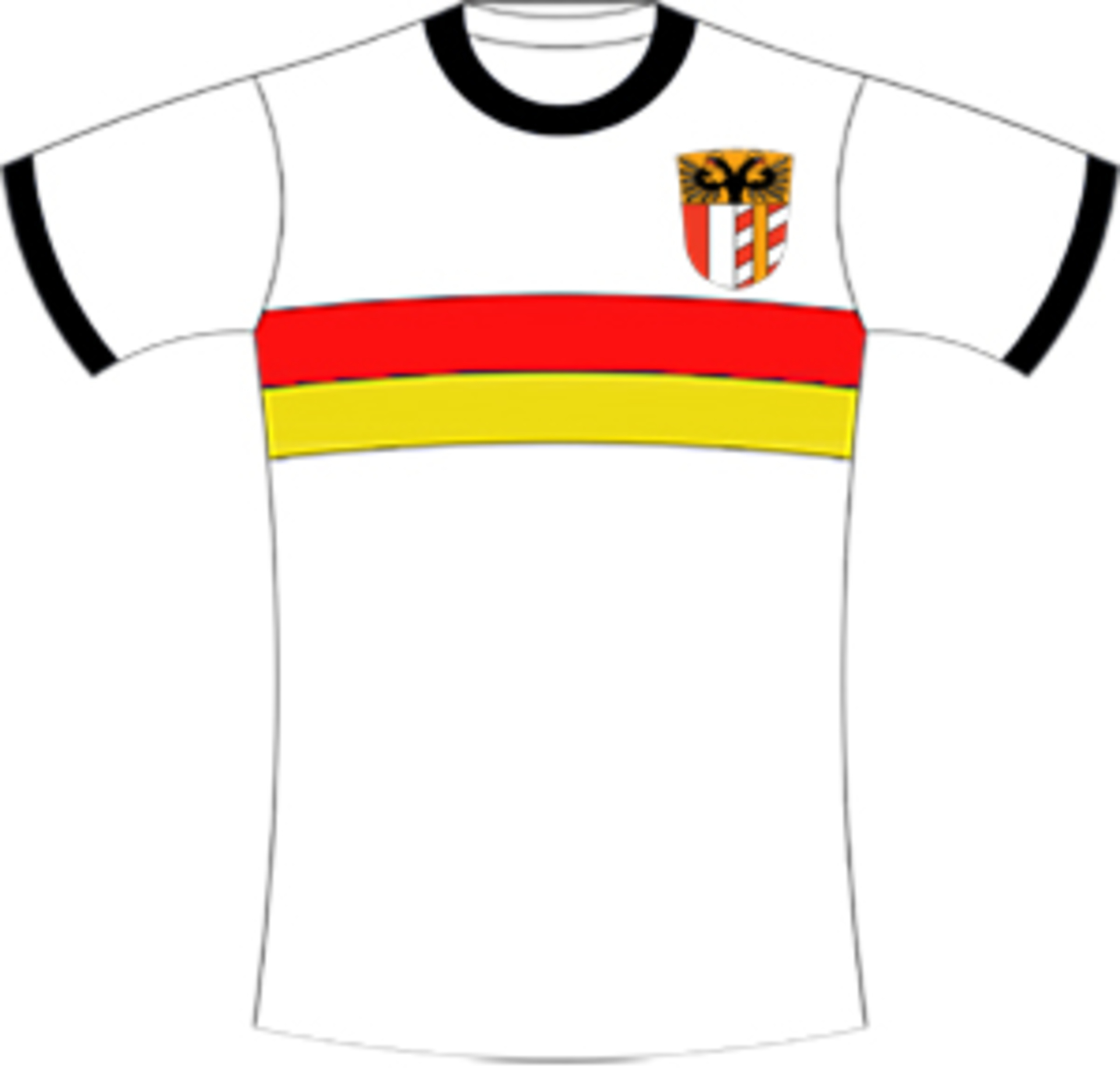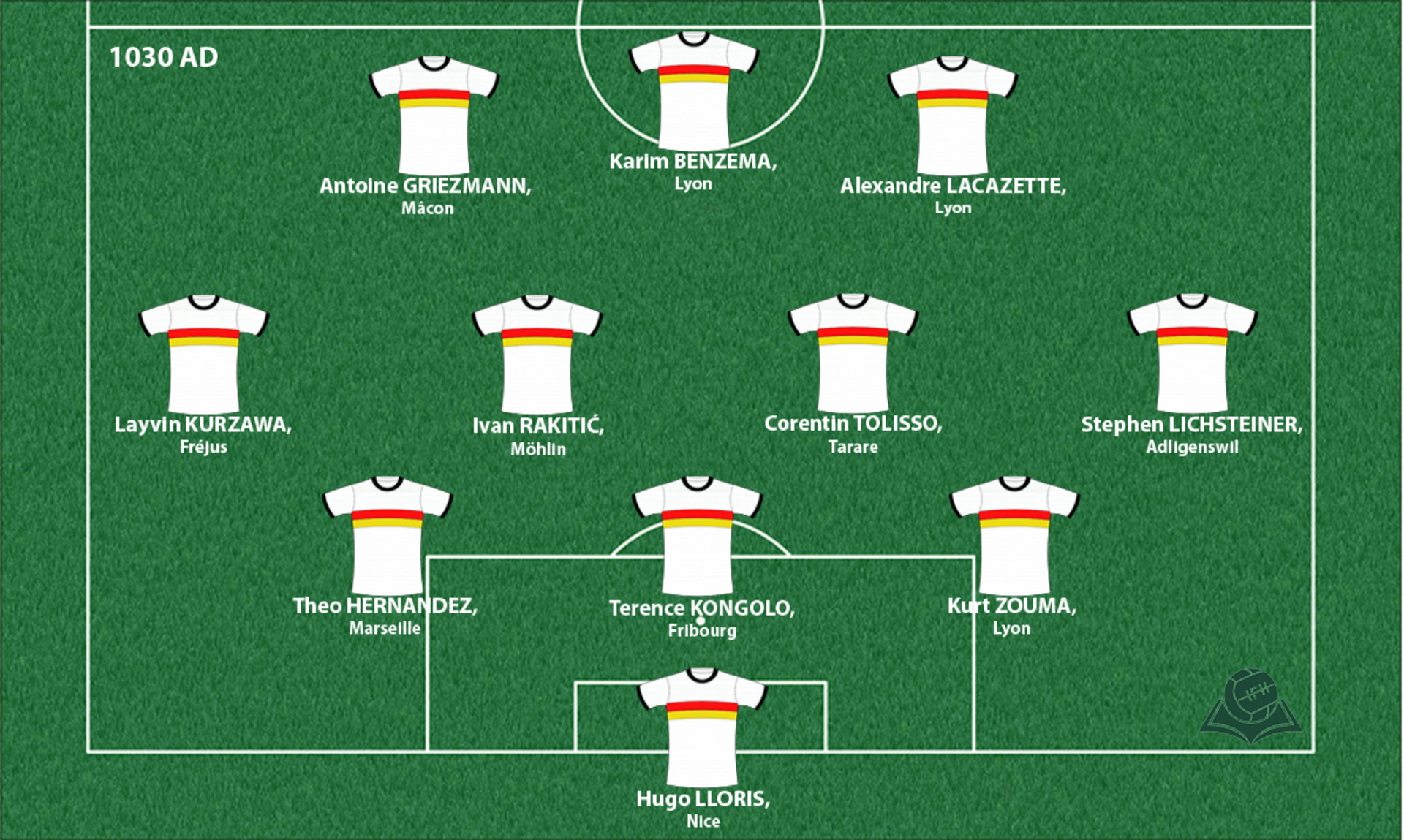The Kingdom of Burgundy
The Kingdom of Burgundy, with the headquarters in Arles, was established after the Middle Francia fell apart and Upper and Lower Burgundy united (933). The Kingdom was located between the Jura and river Saone, the Alps and riven Rhone, and Provence and the Mediterranean sea at the south.

Coat of arms

Shirt
| Position | First name | Last name | Mjesto rođenja | Like | Dislike | |
|---|---|---|---|---|---|---|
| GK | Hugo | LLORIS | Nice |
10 |
1 |
|
| GK | Roman | BÜRKI | Münsingen |
3 |
0 |
|
| GK | Yan | SOMMER | Morges |
3 |
0 |
|
| DC | Florian | LEJEUNE | Isters |
3 |
0 |
|
| DC | Younes | KABOUL | Saint-Julien-en-Genevois |
2 |
1 |
|
| DRC | Kurt | ZOUMA | Lyon |
3 |
1 |
|
| DLC | Lucas | HERNANDEZ | Marseille |
7 |
1 |
|
| DLC | Malang | SARR | Nice |
4 |
0 |
|
| DLC | Terence | KONGOLO | Fribourg |
2 |
0 |
|
| DR | Stephen | LICHTSTEINER | Adligenswil |
3 |
0 |
|
| DL | Faouzi | GHOULAM | Saint-Priest-en-Jarez |
2 |
0 |
|
| DL | Theo | HERNANDEZ | Marseille |
7 |
1 |
|
| DL/ML | Layvin | KURZAWA | Fréjus |
8 |
3 |
|
| DMC | Josuha | GUILVAOGUI | Ollioules |
2 |
0 |
|
| DMC | Maxim | LOPEZ | Marseille |
2 |
0 |
|
| DMC | Maxime | GONALONS | Vénissieux |
2 |
0 |
|
| DMC/DC | Benjamin | STAMBOULI | Marseille |
2 |
0 |
|
| MC | Corentin | TOLISSO | Tarare |
5 |
1 |
|
| MC | Ivan | RAKITIĆ | Möhlin |
14 |
0 |
|
| MC | Vincent | KOZIELLO | Grasse |
2 |
0 |
|
| MRC | Jordan | FERRI | Cavaillon |
2 |
0 |
|
| AMC | Younes | BELHANDA | Avignon |
5 |
0 |
|
| AMRLC | Samir | NASRI | Septèmes-les-Vallons |
1 |
1 |
|
| AMRL | Rachid | GHEZZAL | Décines-Charpieu |
1 |
0 |
|
| AMRL/FC | Yannick | BOLASIE | Lyon |
1 |
0 |
|
| FRLC | Alexandre | LACAZETTE | Lyon |
10 |
1 |
|
| FC | Anthony | MODESTE | Cannes |
2 |
0 |
|
| FC | Bafetimbi | GOMIS | La Seyne-sur-Mer |
3 |
0 |
|
| FC | Karim | BENZEMA | Lyon |
9 |
3 |
|
| FC | Luuk | DE JONG | Aigle |
2 |
0 |
|
| FC | Olivier | GIROUD | Chambery |
4 |
0 |
|
| FC/SS | Nabil | FEKIR | Lyon |
2 |
0 |
|
| FRLC/SS | Antoine | GRIEZMANN | Mâcon |
14 |
0 |
(Today part of: southern and eastern France, southern and western Switzerland)
The Benedictine abbey Cluny was located in the kingdom. The abbey was important because the initiative aiming to restore religious life and moral health of priests was established in it. It served as an example for other similar initiatives in monasteries throughout Europe. Furthermore, they fought against simony (the act of selling church offices and roles) and profane appointments (rulers appoint bishops). Unlike the norther Lothringia, which was also developed from the Middle Francia, Burgundy was not integrated in the Holy Roman Empire in 1032 when it was possessed by the emperor. It became an autonomous country within the Empire and emperors continued to have the title of the kings of Burgundy for three hundred years. The emperors-kings in the regions of the kingdom of Burgundy (which were rarely visited) gradually lost their governance because the territorial forces increased.
By the mid-14th century, when the Kingdom formally broke up, the regions of Provence, Dauphine, Savoy, Free County of Burgundy, Lyonnais, Vivarais and parts of western Swiss Confederacy gained their independence. Since then, the name “Burgundy” was ambiguous. Given the fact that the kingdom no longer existed as such, the name Burgundy started to be used at the north where it got a new meaning – Burgundy Arles countries (French Comte) and Lothringia countries (the Netherlands).
Sources
- Felipe FERNANDEZ-ARMESTO, Narodi Europe, Zagreb, 1997.
- Jean Francois NOEL, Sveto Rimsko Carstvo, Zagreb, 1998.
- Therese SCHUSSEL, Erich ZOLLNER, Povijest Austrije, Zagreb, 1997.
- ''Kingdom of Arles'', https://en.wikipedia.org/wiki/Kingdom_of_Arles
- Coat of Arms: https://en.wikipedia.org/wiki/List_of_coats_of_arms_of_French_peers
